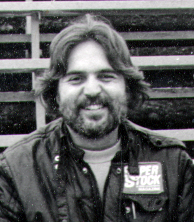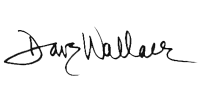|
|
||||
 |
||||

Is This The Golden Age Of Drag-Racing Journalism, After All?Anyone who's lived half a century has likely experienced professional displacement, and I'm not talking about cubic inches. For example, racing-oriented Web sites and "e-zines" like this one are already taking their toll on the print-publishing careers of established editors, writers, photographers, printers and advertising salespersons. To a print dinosaur being displaced by some young Webhead, so-called "New Media" is rightly perceived as the biggest threat that he or she has ever confronted. It first happened to me in the early 1970's, after the number of independent weeklies published in southern California had gradually declined from four to one. In the mid-Sixties heyday of "drag rags," this hungry young speed typist had been on top of the world. I didn't realize it at the time, but for $25 a week, not every reporter was both willing and able to spend all day Sunday at the drags as the combination-publicity-and-trophy man, then spend all night writing as many as four different versions of event coverage - including a listing of every class winner's name, hometown, e.t. and speed - on a manual typewriter. I'd watched my dad do the drill on the dining-room table every weekend for years. The ultimate objective was to screech up to the specially marked mailbox outside the Van Nuys post office in time to make Monday morning's Special Delivery deadline. Missing that cutoff by even a few minutes meant spending Monday on various freeways, hand-delivering respective stories to the far-flung offices of Drag News, Drag Sport Illustrated, Drag World and Drag Digest. That meant missing a full day of school and / or work at my "real" part-time job, which was strictly forbidden by the parents of this aspiring journalist. I don't believe that the Dave Wallaces, Sr. or Jr., ever missed that weekly deadline from 1960 or 1961, when San Fernando Raceway's management discovered that Dad knew how to type, until late 1967, when I quit. I quit because track policy forbade employees from competing, and I wanted to race my 165 Formula-S Barracuda in J / Stock. This ill-advised decision, at age 18, led to one of the briefest racing careers on record: It lasted exactly as long as the output shaft of my Art Carr Torqueflite. It also led to my second major career break. My availability, combined with the Wallaces' reputation for making those Monday deadlines, prompted a job offer from Lions Drag Strip's PR guy and my journalistic hero, Ralph Guldahl Jr. By the end of 1968, I was happily making two 90-mile round trips every weekend in my Torch-Red Road Runner, then typing into the wee hours of Monday. Separate reports were required of Saturday night's pro show and Sunday afternoon's bracket race. Though the weekly papers had dwindled to Drag News and Drag World (by now the house organ of AHRA, which sanctioned Lions at the time), the ability to create four different stories overnight was still in demand. Little did I know that caffeine-addicted correspondents like me were speeding the demise of monthly-magazine staffers and their freelancer contributors. Because we local reporters and photographers were able to get our material into the hands of newspaper publishers so quickly, they were able to go to press on Tuesday, then deliver their papers Wednesday afternoon - packed with detailed stories and killer action photos - within 72 hours of Sunday's Top Fuel finals! Why would a reader wait three whole months to read about a big meet at Pomona, Lions, San Gabriel, Fontana or, later, Irwindale or Orange County in some slick magazine that was compromised by space limitations and political influences? In the mid- and late Seventies, these monthlies had the last laugh - or so it seemed at the time. Most of the great SoCal strips were gone. So were all of the independent weeklies, their advertising dollars drained away by NHRA's ever-more-powerful National Dragster. Since Dragster covered only NHRA events (from NHRA's official perspective), and because television had yet to get serious about drag racing, the monthly mags became the only source of relatively unbiased event coverage. As recently as 1980, yours truly was making a living as the resident drag-racing writer at Hot Rod - and was the last staff member to do so. Again, I was about to be displaced by emerging technology. Now, television and the VCR were the culprits. Even while editing Petersen's Drag Racing magazine (1984-88), I questioned the merit of killing trees to create space for any print coverage of national events that had been televised and home-videotaped many weeks - and multiple national events - earlier. Was anyone reading such old news? Once again, my dream job had become a victim of technology. Worse, I was forced to endure the indignity of second-class citizenship by a sanctioning body that seemed willing to bow to every demand from anyone connected to electronic media. When a camera crew arrived midway through the first round of Top Fuel eliminations and wanted a spot along the guardrail, print photographers were expected to give it up, or go sit in the stands. Photo credentials for Sunday's eliminations on the "good" (sunlit) side of the track became difficult to obtain, unless television was involved. When officials began roping off prime starting-line real estate for the exclusive use of TV camera operators and their spotters and cable carriers and gophers, I reluctantly traded in my E-ticket for a ringside seat at West Coast nostalgia races. With no television coverage or "900" results lines or Internet reports, and only spotty print exposure, nostalgia races of the 1980's and early 1990's were blessedly unspoiled by mass media. The starting line still offered equal access to anyone with a photo pass, regardless of the medium. Officials were genuinely helpful and friendly, grateful for any media mention that might be generated. There were no elevated platforms or special privileges for every Dockers-wearing dork who showed up with a video camera. Best of all, there was demand for stories and B&W photos by house organs like the Goodguys' Goodtimes Gazette and regional rags such as Full-Throttle News and American Drag News, plus the occasional magazine assignment from Steve Collison, one of the few editors who appreciated the excitement and competitiveness of this parallel universe. The refreshing purity of nostalgia racing and an absence of comprehensive news inspired yours truly to volunteer to cover every event for Goodguys' monthly Gazette. This old print reporter thought he'd died and gone to heaven. Alas, entering the 2000 racing season, I was getting that old sick feeling of impending obsolescence. With national-event car and crowd counts in decline, more attention is coming to front-motor meets, particularly the six shows presented annually by Goodguys, plus NHRA's Hot Rod Reunion. It was recently announced that Goodguys will be providing daily results on the Web during this year's events, and also that TV-veteran Steve Evans is producing a pilot program that he hopes to expand into a regular series for cable television. Can the ropes and platforms and sponsor influence and oppressive security be far behind? Goodguys president Gary Meadors probably thinks I'm kidding every time I warn him that what's been good for drag racing in the short term hasn't always proved advantageous in the long run. (Gary, I'm not kidding!) This time, though, a funny thing happened on the way to forced retirement. I'd barely had time to lick my wounds before the phone starting ringing and the e-mail began arriving with job assignments. Suddenly, there's renewed demand for exactly the kind of deadline stories that I was writing in the 1960's and '70's. Whereas long Sunday nights once meant manually typing multiple event reports from beginning to end - consuming special typewriter erasers and, later, White-Out correction fluid - my Sunday nights will now be spent at the keyboard of a laptop computer, creating and revising and e-mailing individual reports for electronic publications such as Drag Racing Online, Hot Rod Nostalgia, and at least two additional e-zines. Everyone with a Web site seems to be begging for "original content," and they all want it at "Net speed." After all, stories and photos will be seen within a few hours of the AA / Fuel Dragster final - worldwide! Maybe there's still a place for old-fashioned reporters who can crank out 50 words a minute, after all. In fact, this is shaping up like nothing less than another Golden Age for racers, fans and skilled photojournalists. Decades from now, when historians look back at the early 21st century, New Media will undoubtedly be blamed for putting people out of work. Sorry, I'm too busy answering e-mail from electronic publishers to worry about that right now. Besides, the prime victim of this particular revolution would appear to be television, whose incompetent coverage can't hope to compete with the immediacy and independence of Internet reports. It looks like technology is set to strike again, but you won't catch me consoling anyone in the uniform of network TV or Diamond P. I've got an old score to settle with those dinosaurs.
Dave Wallace Jr. is a washed-up photojournalist and magazine editor who co-owns Good Communications, Inc. a full-service advertising agency (goodcom@goldrush.com). Wallace also publishes the Hot Rod Nostalgia "magalog" (www.hotrodnostalgia.com). Volume Five of the print version is currently in production.
Photo by Rollo Tomassi
|
||||
|
Copyright 1999-2001, Drag Racing Online and Racing Net Source |
||||

